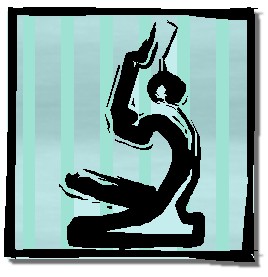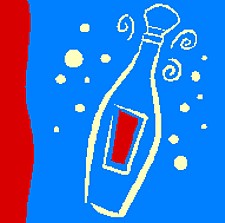 As if the world didn’t have enough to worry about, SARS (Severe Acute Respiratory Syndrome) has stunned the people across continents. So far, 14 deaths have been reported in Canada and all victims have been those who have traveled to Asia or who came in direct contact with SARS cases at home or in the hospital (Health Canada).
As if the world didn’t have enough to worry about, SARS (Severe Acute Respiratory Syndrome) has stunned the people across continents. So far, 14 deaths have been reported in Canada and all victims have been those who have traveled to Asia or who came in direct contact with SARS cases at home or in the hospital (Health Canada).
As of April 21, 2003, “Health Canada has received reports of 316 probable or suspect cases of severe acute respiratory syndrome (SARS) in Canada.”
To combat this frightening disease, scientists world wide are working to learn more about the virus which causes it, and to develop an effective treatment.
Physiology of the SARS Causative Agent:
(Adapted from Time Magazine).
The pathology lab of the University of Hong Kong is one of the few places in the world where researchers are using powerful transmission electron microscopes to observe the SARS virus. This SARS agent is a small particle of protein-encrusted RNA, which under 100,000 times magnification looks like “fuzzy little balls,” made up of tiny hooks poking out of spherical body. This particular characteristic helps classify the pathogen as a member of the coronavirus family. It is unusual for a coronavirus to cause anything more serious than a cold, but the SARS virus has somehow mutated into a deadly infectious agent. It is as yet unknown how or why this occurred.
The Origin of SARS
It is believed that SARS originated in the Guangdong province of China. In early March, Hong Kong health officials became suspicious when patient after patient started to show up with a high fever, dry cough, muscle soreness and a mild sore throat. Within a week, the patients developed signs of adult respiratory distress syndrome and had to be hooked up to ventilator support.
Hong Kong is located near the agricultural zones of south-eastern China, where farm animals and the human population live in close proximity and illnesses like influenza routinely jump from animals to humans. Alert to this fact, Hong Kong officials found out that of the first 45 people to contract SARS most had contact with employees of the Hospital in Hong Kong. Those people in turn had contact with a smaller circle who treated or visited a patient from Guangdong province, originally diagnosed with nonspecific fever. Hong Kong quickly notified the World Health Organization (WHO) and began trying to contain SARS and find a cure (Time Magazine).
What are the symptoms of SARS?
As of March 24th, 2003, SARS has been reported in thirteen countries. The main symptoms of SARS are:
– high fever (> 38° Celsius)
– dry cough
– shortness of breath.
– SARS may be associated with other symptoms, including headache, muscular stiffness, loss of appetite, malaise, confusion, rash and diarrhoea (WHO).
How do you catch SARS?
Most of the reported SARS cases seem to have been transferred through direct, close contact with infected persons. When people cough, they send droplets of fluid into the air, which other people inhale. Patients are therefore placed in an isolation to reduce the spread of the virus, and for the same reason health care workers and visitors wear masks, aprons and gloves when in close contact with the suspected or infected patient. You can protect yourself by frequently washing your hands, and by avoiding touching your eyes, nose or mouth. If you suspect of any of SARS symptoms contact your local health authorities. The City of Toronto public health website says that “Frequent hand washing is the most important way to prevent the spread of infection” and they have prepared a document (http://www.city.toronto.on.ca/health/sars/sars_handwashing.htm) detailing why this step is so important, and how to properly wash your hands to ensure the removal of any infectious agent.
Preventive strategies:
The WHO has cautioned travelers to be aware of the SARS symptoms and to take preventive measures if they must travel to effected areas like China or Japan. If persons suspect themselves to be a SARS carrier they should contact the health authorities immediately not only to curb the virus in their own system, but also to further contain the spread. With treatment, most people who contract the virus will survive.
As a world wide collective effort, WHO will continue to monitor possible and suspected cases of SARS with the collaboration of countries who have reported SARS cases. It is also working with its partners to coordinate efforts to improve the accuracy of SARS diagnosis and to advise physicians on how to best treat the infection. The public can obtain information about new outbreaks as well as new developments from the WHO web page at: http://www.who.int/en/.
According to WHO, “As of April22, 2003, a cumulative total of 3947 probable cases with 228 deaths have been reported to WHO from 25 countries. The 11 new deaths were reported in China (6) and Hong Kong SAR (5).” WHO has also recently issued a travel warning asking that people avoid the Toronto area for a period of three weeks, although Toronto insists that the disease is contained.
Treatment:
At this time, no drug seems to effectively treat SARS. The recovery of infected patients depends upon the exposure to, and pathogenicity of the virus – i.e., how deadly the virus is. SARS is considered to be less infectious than the flu or the common cold. The incubation period for SARS – that is, time it takes for the virus to develop in a host body – ranges from 2 to 5 days. Due to its initially speedy spread, people at first linked SARS with bioterrorism but authorities have since dismissed this idea.
Summary of Key Health Canada Activities :
Health Canada is continuing 24 hour surveillance of SARS outbreaks in Canada. It is collaborating and coordinating efforts within each province and territory through groups of experts in infection control, and through treatment guidelines and public health measures.
Health authorities also working with WHO staff of SARS Emergency Response Centers and also in WHO headquarters in Geneva.
For additional information on SARS, the public can contact Health Canada’s information line at: 1-800-454-8302.
Conclusion:
According to Doctor Donald low, chief Microbiologist at Mount Sinai Hospital Toronto, “This is a lot like the early days of HIV.” There is such fear that all of this may seem like an overreaction to a disease that is not as fatal as Russian Flu of 1889-90 which claimed 250,000 lives in Europe. West Nile Virus is more deadly than SARS and measles is more infectious. The fear of SARS has lot to do with the human psyche. We fear the unknown, and SARS tops the charts as something we know very little about – for example we do not know how long a victim has been contagious by the time symptoms appear or if a vaccine will ever be available (Time Magazine).
References and sources of further information:
Health Canada: Advisory. Update #20 – Severe Acute Respiratory Syndrome: http://www.hc-sc.gc.ca/english/protection/warnings/sars/update20.html
Time Magazine. Lemonick, Michael D. Will SARS Strike Here? April 14, 2003.
World Health Organization: Frequently Asked Questions on Severe Acute Respiratory Syndrome [SARS]: http://www.who.int/csr/sars/sarsfaq/en/
World Health Organization: Cumulative Number of Reported Cases of Severe Acute Respiratory Syndrome (SARS): http://www.who.int/csr/sarscountry/2003_04_04/en/
World Health Organization: Update 36 – Situation in Singapore and China: http://www.who.int/csr/sarsarchive/2003_04_22/en/
Prevention:
City of Toronto SARS Prevention: Handwashing http://www.city.toronto.on.ca/health/sars/sars_handwashing.htm
City of Toronto SARS Prevention: Disinfecting http://www.city.toronto.on.ca/health/sars/sars_disinfecting.htm

